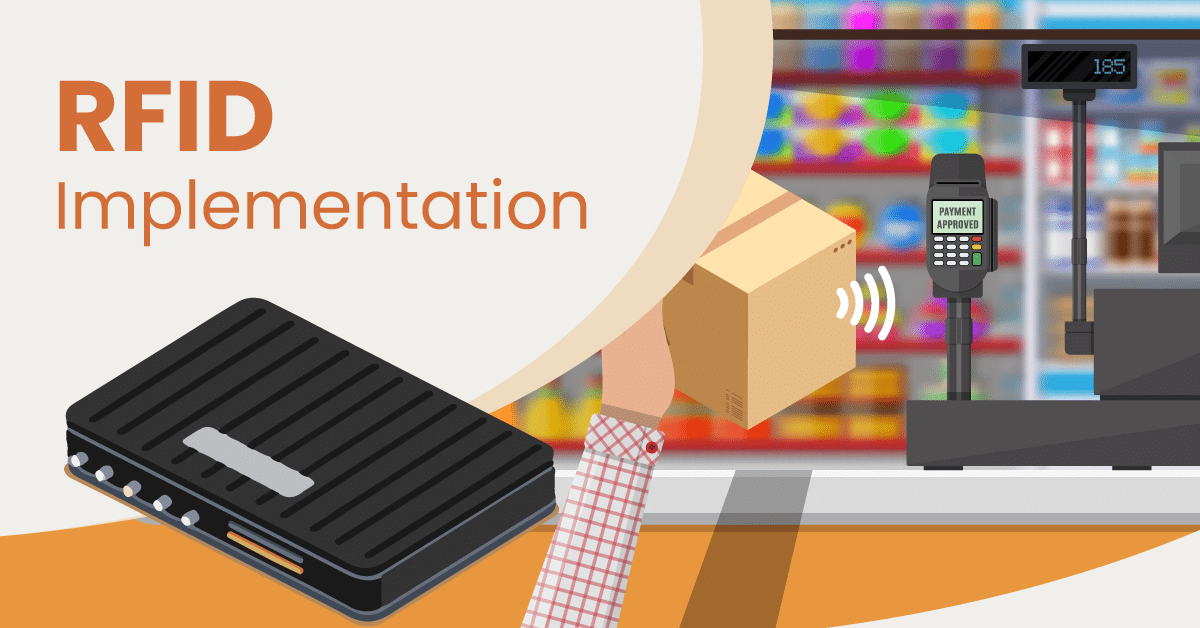10 Steps to Successfully Implement an RFID System

04/01/2023
Radio Frequency Identification (RFID) technology has made significant advancements and is now widely adopted across various sectors. However, successful RFID implementation requires close collaboration across departments, clear project goals, detailed workflows, and proper data collection mechanisms to choose the most appropriate technology.
Step 1: Appoint a Project Manager
The first step in any RFID implementation is appointing a qualified project manager. This person will oversee the entire project and should have a solid understanding of both operations and RFID technology. While technical knowledge is not mandatory, the project manager should have strong ties with upper management and act as a key coordinator across departments.
Step 2: Build a Core RFID Project Team
Create a project team with members from key departments such as production, procurement, sales, maintenance, and logistics. These stakeholders will collaborate throughout the implementation, providing input on requirements, operational workflows, and technical feasibility.
Step 3: Train the Project Team on RFID
Ensure all team members understand the project’s goals and the fundamentals of how an RFID system works. This includes knowing how to operate the system, identify its strengths and limitations, and apply RFID to optimize current business operations. Well-trained team members are also better equipped to detect issues and contribute useful ideas during implementation.
Step 4: Review Relevant Standards and Regulations
There are many RFID-related standards and regulations worldwide, which vary by country or region and are governed by different authorities. One of the most important considerations is determining which frequency bands and power levels are compliant and best suited for the project.
Step 5: Set Clear and Measurable Project Objectives
RFID implementation must align with the organization’s business strategy. Clearly define the goals and expectations of the project and understand the potential benefits and risks. Evaluate whether these objectives are realistic and achievable based on the company’s capacity and operational needs.
Step 6: Map Out Your Current Workflow in Detail
Develop a comprehensive overview of current operations by answering key questions:
- Where are goods received?
- Where and how are items stored?
- How are goods picked?
- What internal workflows exist?
- Where is inventory held?
- How is inventory transported?
- What systems are currently in place, and how can they be integrated?
This step is critical in identifying where and how RFID can be applied. Keep in mind that implementing RFID may require changes in operational processes—but these adjustments often lead to long-term efficiencies and improvements.
Step 7: Select the Right Technology and Hardware
Each RFID project must use the most suitable technology for the environment. For wide-area tracking, active RFID tags are ideal. For item-level tracking in warehouses, passive RFID tags are more appropriate.
Selecting the right tags, readers, and antennas is essential. RFID tags come in many shapes, sizes, and formats, and they often determine the project’s success. Conduct thorough testing of tag performance and signal transmission in real-world conditions before finalizing your choices.
Step 8: Estimate Costs and Calculate ROI
Before deployment, estimate the total cost of the RFID project—including hardware, software, installation, integration, and training. A detailed cost projection not only helps with budgeting but also provides visibility into the potential return on investment (ROI) from adopting RFID.
Step 9: Start with a Pilot Project
Begin with a small-scale pilot. This allows you to validate the system’s effectiveness, fine-tune workflows, and resolve technical issues in a controlled environment. A pilot makes it easier for employees to gradually adapt to the new system and ensures a smoother transition from the old system.
Step 10: Scale Across Departments
Once the pilot shows positive results, expand the system company-wide. Deploy both hardware and software across all departments, and ensure that your project team provides training and coordination. Consistent support is key to successful adoption and long-term use of the RFID system.



Related Articles
- 1Gate’s RFID-Based Traceability & Anti-Counterfeiting System
- Hệ thống truy xuất nguồn gốc và chống giả 1Gate
- RFID Applications in Steel Manufacturing Plants
- Choosing RFID Tags for Metal Surfaces – What You Need to Know
- UNIQLO Implements RFID on a Global Scale
- Walmart, RFID, and the New Retail Strategy
- Ứng dụng RFID trong nhà máy sắt thép
- Lựa chọn thẻ RFID gắn trên kim loại- Những điều cần lưu ý
- UNIQLO áp dụng RFID trên phạm vi toàn cầu





